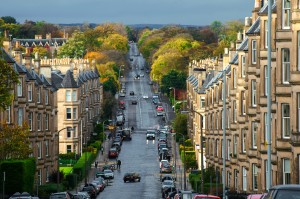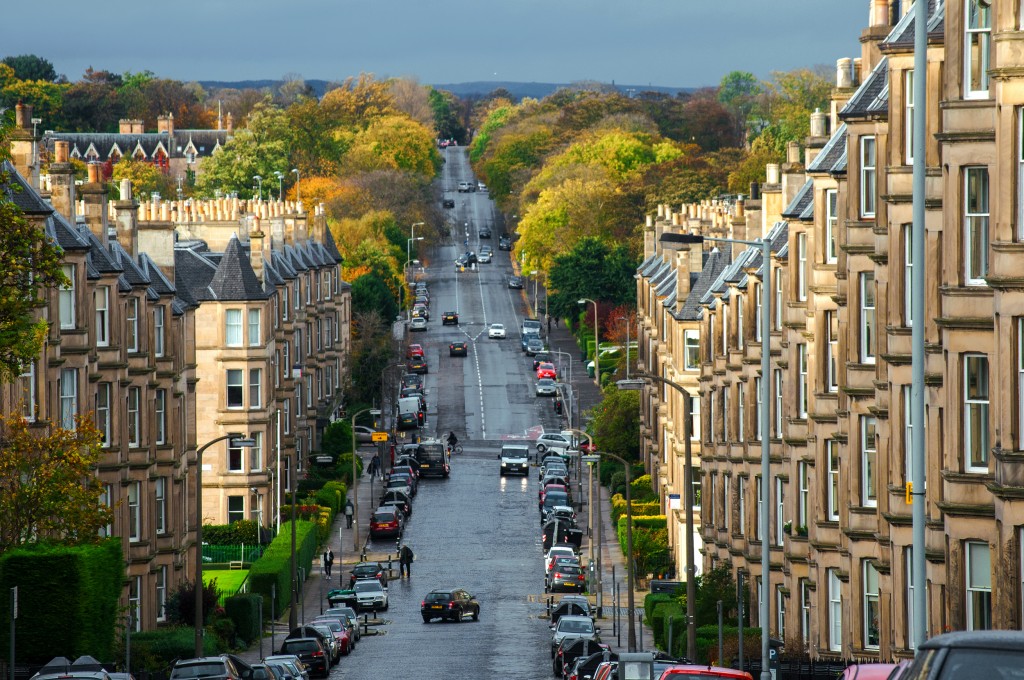Property owners in Scotland experienced the biggest uplift in prices in 2021, whilst London homeowners saw far more subdued growth.
 This is according to new analysis from Yorkshire Building Society which found residents in Inverclyde in the west of Scotland and those in the Scottish Borders in the east saw property prices go up by as much as 21% in the year to October.
This is according to new analysis from Yorkshire Building Society which found residents in Inverclyde in the west of Scotland and those in the Scottish Borders in the east saw property prices go up by as much as 21% in the year to October.
But, at the other end of the spectrum, prices in the South – in particular, London – saw far less buoyant growth, according to the building society. Indeed, eight of the 10 local authorities in the UK with the lowest prices increases over the same period were in London.
One area, Lambeth, even experienced a drop in the average house price. The South London borough saw prices fall by 1.6% to £533,828.
The data comes as Nationwide revealed house prices across the UK had, on average, increased over the year to December 2021 by 10.4% to £254,822.
This meant 2021 had been the strongest calendar year for house price rises since 2006.
But Yorkshire Building Society’s analysis of Office for National Statistics (ONS) data showed that in the North of the UK, prices were rising at an even more significant pace in the year to October.
It said Northern areas of Britain dominated the list of the top 10 fastest growing local authority districts over the past year with four from Scotland.
Hyndburn in Lancashire, where house prices increased by 20.8% over the year to October 2021, and Burnley – where prices went up by 18.5% in the same period – were also high on the top ten list.
Low-cost borrowing
Nitesh Patel, strategic economist at Yorkshire Building Society, explained the factors which had caused the extraordinary price growth seen in many parts of the country.
One of the major drivers alongside the demand for more space, he said, were the low mortgage rates which had been on offer at the end of last year.
“Low borrowing costs is an important factor, particularly for homeowners with high levels of equity,” he explained.
“The increased availability of low deposit mortgages has also been an enabler mostly for first-time buyers. Unemployment has also been falling for the last year and the jobs market has been getting stronger since the phased re-opening in April.
“The stamp duty holiday with zero tax payable on purchase price of up to £500,000 (and then lowered to £250,000) is another significant driver, particularly for home-movers and first-time buyers will have benefitted from those taking their next step and moving along the property ladder.
“However, two impacts of the pandemic might be even stronger drivers. Due to the restrictions and less travelling, many households saved more than they normally would have, estimated at around £170 billion of ‘excess’ savings.”
Heading for a slowdown
The big question remaining now, as we enter 2022, is whether this strong growth can continue into this new year.
Karen Noye, mortgage expert at Quilter, thinks we are likely to see a slowdown in property prices and transactions, particularly if the Bank of England (BoE) increases interest rates further.
“While we may see the property market slow, this does not mean buying a home will become instantly more affordable,” she said.
“Alongside the already inflated housing market, mortgage rates have increased following the BoE’s rate rise, and as inflation does not appear to be slowing, costs will likely continue to rise.
“Increased mortgage costs coupled with the uncertainty surrounding the Omicron variant could well make people think twice about moving home and we could see a break in house price growth as a result.
“However, supply vs demand issues persist, so we are likely to see a gradual slowing of growth as we head into 2022 as opposed to a sharp drop.”














